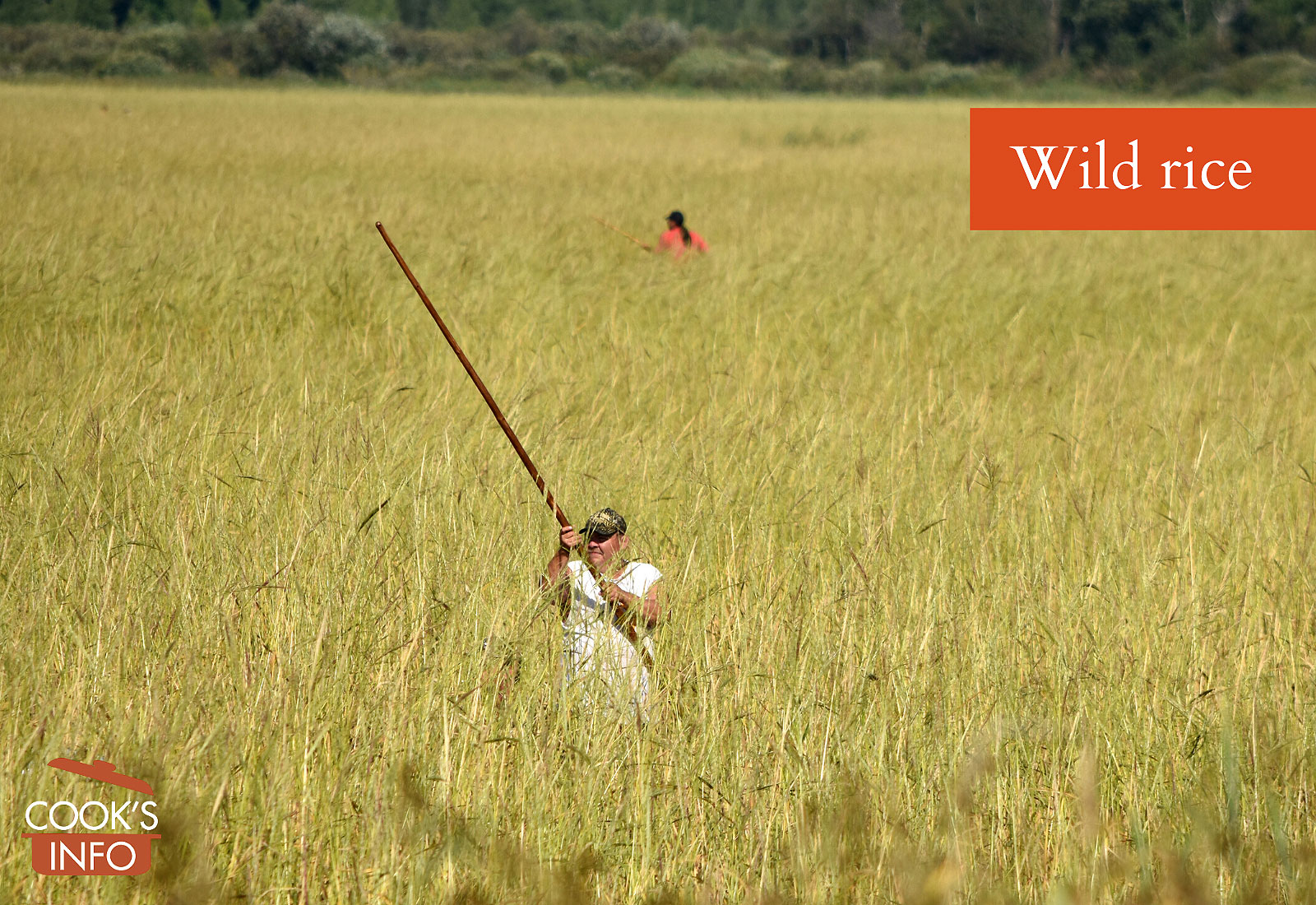
Wild rice in basket. Leslie Seaton / wikimedia / 2011 / CC BY 2.0
Wild rice, in the sense that North Americans know it, is not a true rice. It’s actually the seed of an annual water grass (Zizania aquatica) which is native to North America.
Wild rice is very expensive.
To be clear: this article does not discuss wild rice as perhaps known in Australia, or Spain, which would be rice from the Oryza sativa plant species which has escaped cultivation to grow on its own out in the wild.
Wild price production
The reed-like grasses grow up to 3 metres (10 feet) tall, and produce flowers at their tops which in turn produce the seeds. The grain ripens over a 10 to 14 day period. In the wild, up to half the crop is lost as seeds just drop on their own into the water. This isn’t a total loss, however: it’s the plants reseeding themselves for next year.
Starting in the mid-1980s, wild rice has been cultivated in paddies. Paddy-raised wild rice will be more greyish, while that harvested from the wild will be more brownish. Purists feel that the taste of paddy-raised wild rice isn’t as good, but, it is driving down the cost of true wild rice. As of 2005, 95% of the wild rice sold in America is paddy-grown, most of it in California.

Members of the Leech Lake Band of the Ojibwe Tribe harvest wild rice on Mud Lake, Minnesota, 2015. George Stringham / wikimedia / 2015 / Public Domain
Cooking Tips
Cooked all by itself, the nutty flavour of wild rice can be a bit much of a good thing. Consequently, both to tone down the flavour a bit, and to stretch it out a bit more owing to its cost, it is generally cooked with other rice.
You cook wild rice as you would normal rice, except it will take longer. It doesn’t have much starch, and will cook up fluffy and separated.
To cook, wash 1 cup (11 oz / 300 g) of wild rice, and bring 3 cups (24 oz / 750 ml) of salted water to boil in a pot. Add the washed rice, return to the boil, stir, then cover and reduce heat to a simmer for 50 to 60 minutes. The kernels should be starting to pop open. Uncover, fluff with a fork, and simmer for 5 more minutes. If any water remains, just drain it off. You can cook it a bit less than the 50 to 60 minutes if you prefer a bit more of a chewy texture.
When combining with other rice, cook each separately, then combine.
Equivalents
1 cup (11 oz / 300 g) uncooked wild rice = 3 cups (13 ½ oz / 400 g) cooked wild rice
History Notes
First Nations people in North America introduced European settlers to wild rice.
Literature & Lore
“If quail or ducks are to be served for dinner, an old Indian dish, wild rice, is very desirable. Prepare this rice as follows:
Place in a double boiler a cupful of milk or cream to each cupful of rice and add salt and pepper to taste. It requires a little longer to cook than the ordinary rice, but must not be stirred. If it becomes dry add a little milk from time to time.”
— Rufus Estes. From “Hints to Kitchen Maids” section in: Good Things To Eat, As Suggested By Rufus. Chicago: The Author. 1911. Page 8.
Sources
Kummer, Corby. Going with the Grain (Wild Rice). The Atlantic Monthly, May 2004.

Wild rice in bags. © CooksInfo / 2019

